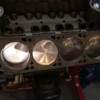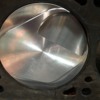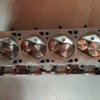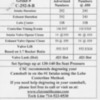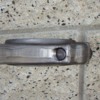quote:
Originally posted by pantera chris:
Doug, Aluminum heads allow higher compression ratios, you know that? every point of compression is good for about 50 horsepower, a 500 h.p. engine with 9 to 1, will make 600 with 11 to one. 700 at 13 to one. The higher octane along with cam header etc all play a part, but compression is horsepower.
Agree to disagree.
The first set of aluminum heads I used was in 1983 on an iron Cleveland block. They are not a stranger to me.
What you are stating is a mis-interpretation of the iron head to aluminum head power production comparison or ratio.
To not sound like a physics nerd, what it says in laymen terms is that with all things given equal, in order to produce equal horsepower, an engine with aluminum heads on an iron block, the compression ratio needs to be 10% higher with aluminum heads then the iron heads have.
Aluminum transfers heat faster to the water jacket then iron heads do. It's roughly 1.1:1 faster, or 10%.
Heat generation or captivation contributes to horsepower production.
Fuel can be ignited by compressing it. There is a chart for that also, i.e., known compressible properties of fuel that gives it an octane rating.
The higher the number, the more difficult the fuel is to ignite by compressing it.
Diesel engines work without any ignition. They compress the fuel to the point of igniting. This is called dieseling.
In a Cleveland with the production quench heads to run 11:1, you need 103 octane gas.
Changing the heads from iron to aluminum will not change that. It will still need the same octane to prevent detonation.
You will just make 10% less horsepower with aluminum heads on the same engine unless you increase the compression ratio to 12.1:1.
Then you will likely need even more octane. Maybe 106?
There are other ways to make horsepower with almost all of the available aluminum aftermarket heads other than raising compression.
I find in a Cleveland 9.5 to 10:1 is enough. What's wrong with over 600 streetable hp on 93 pump gas?


